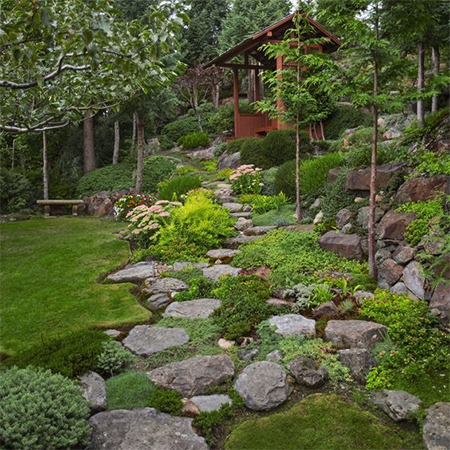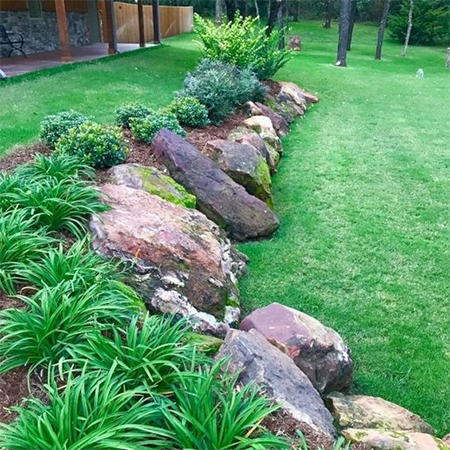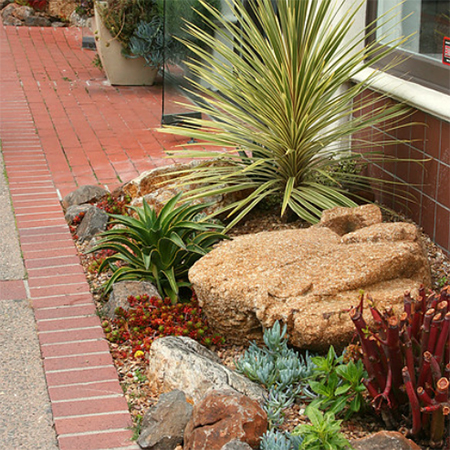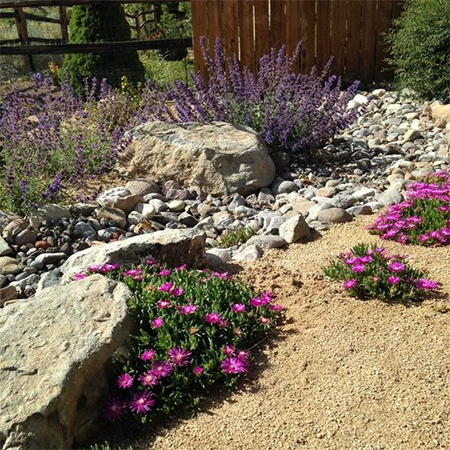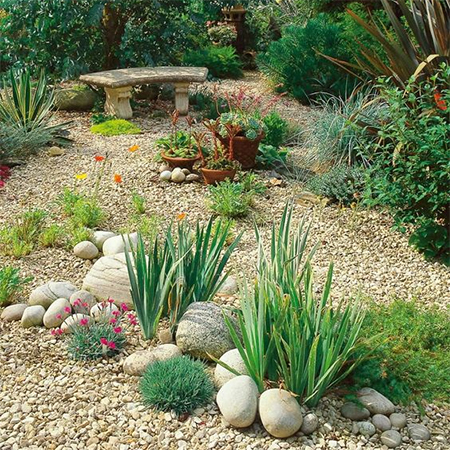How to Establish a Colourful Rockery in the Garden
Adding a rockery to a garden brings added interest to an otherwise plain garden and you can select colourful plants, particularly indigenous varieties, that will create a feature or focal point that requires minimal maintenance.
25/01/2022
pinterest.com/pin/243687029826482021/
Even a small rockery can be established in the garden to add interest as well as be useful if you have a garden that slopes. There are so many different varieties and species of indigenous plants that it is easy to incorporate a rockery that requires little or no maintenance and brings an interesting feature to the garden. Most rockeries are designed for smaller plant varieties, particularly Alpine plants found in northern Europe, but they are just as suited for growing low-growing plants, grasses, succulents, or indigenous species.
pinterest.com/pin/82542605653853901/
Adding a rockery to the garden is also a good way of cutting down on lawn, especially since the lawn is the most expensive area in a garden if you consider the ongoing care and attention it requires and how much water you waste on maintaining a lush lawn. A rockery is mostly low-maintenance if established with the right selection of plants
pinterest.com/pin/3096293486050422/
On a sloping lawn or garden, adding a rockery is the best solution for adding an interesting feature and reducing soil erosion.
pinterest.com/pin/3237030971525993/
In this feature, we discuss how to set up and establish a rockery in the garden and what type of plants would benefit from this situation, particularly if placed in a sunny corner or against a wall that receives plenty of sunlight during the day.
pinterest.com/pin/24488391715024394/
1. Find the Perfect Location for the Rockery
The location you select for the rockery will depend on the plants you want to place in the rockery. You can establish a rockery anywhere in a garden but the plants in the rockery will need full sun, partial shade or full shade and this will determine where to place the rockery. You also want the rockery to be an interesting feature that can be seen from either in the house, close to a patio or deck or just to add a feature in a bland garden.
A rockery should appeal as natural as possible so as to blend in with the surrounding landscape but still be an interesting feature.
pinterest.com/pin/146155950397372281/
2. Interesting Rockery Designs
After settling on the best location, the next step will be to look at designs you can replicate in your own garden. You won't lack inspiration in this regard and will find hundreds, if not thousands, of ideas on the web. When browsing images that you like, make sure any designs you select will be ideal for your rockery and the plants you want to add. Additionally, consider the materials needed to set up the rockery, as this will need to be available locally.
I remember back in the day when I established a rockery in my very first home that Pelindaba rocks were freely available almost everywhere. Now, these are like gold teeth and almost impossible to get your hands on, but there are plenty of other types of rocks, from gravel to small stones to large rocks, and you can search for these online to find your nearest supplier that will deliver to your home.
pinterest.com/pin/9359111702894355/
Establishing a rockery on the pavement outside a property is an excellent way to add curb appeal and cut down on gardening. Plant a variety of drought-resistant plants or shrubs to bring colour, interest and save on water and maintenance.
pinterest.com/pin/697072848579709493/
A good place to pick up assorted rocks is on construction sites. When they are clearing the land they usually set the rocks aside for removal and won't mind if you cart some away.
pinterest.com/pin/8514686786191481/
3. Setting Up the Rockery
Since most of the rockery will comprise of rocks small, medium, and large, you want it to become a part of the landscape and a natural feature rather than one that sticks out like a sore thumb and for this reason, you will want to select the right size of rocks for the size and height of the intended rockery design.
Placing a pile of rocks on top of soil or grass is not how it is done but rather dig out the area where the rocks are to be placed and then you can submerge the rocks so that they resemble a natural outcrop. Removing an area for a rockery will also ensure that weeds will not easily establish themselves but also that you can lay a bed of gravel, pebbles, or smaller rocks to provide essential drainage for the rockery.
If you want to save money on setting up a rockery, the next time you or a friend visit the coast, go walking along the beach to collect coloured pebbles for decorating the rockery. These pastel-hued pebbles look fantastic when paired with assorted succulents.
pinterest.com/pin/378232068713888073/
4. Mimic Nature
When you start placing the rocks on the site, build up layers to create a raised profile and fill up with soil as you continue with the design. Remember that you want the rockery to appear as natural as possible, so a haphazard arrangement is far better than straight lines or perfect shapes. Before completing the design, take a step back as you work to check that the job is proceeding as you would like from all angles.
Rockeries are a solution for coastal gardens that are buffeted by winds. Fill a blank spot with assorted gravel, pebbles and rocks and bring in colourful water-wise plants.
pinterest.com/pin/550142910739558327/
If you have an area in the garden where grass won't grow, fill this with landscaping materials to create a relaxing area where you can sit in quiet contemplation.
pinterest.com/pin/1618549856287830/
After finalising the arrangement and adding all the rocks you can then add quality topsoil for planting. It is important to also select soil suited to the plants you will be placing. Some plants prefer acid soil, others soil that quickly drains and others require a soil that maintains moisture. When purchasing plants for the rockery, be sure to select plants that all require the same type of soil.
South Africa has a wide selection of indigenous plants that can be set in the garden, and they are water-wise and drought-tolerant and require very little maintenance.
pinterest.com/pin/49750770870475297/



